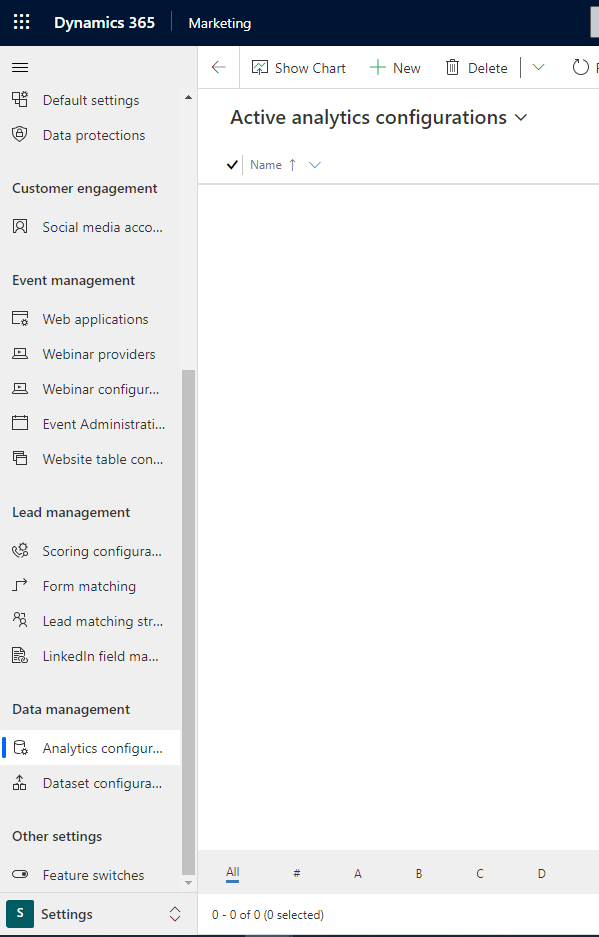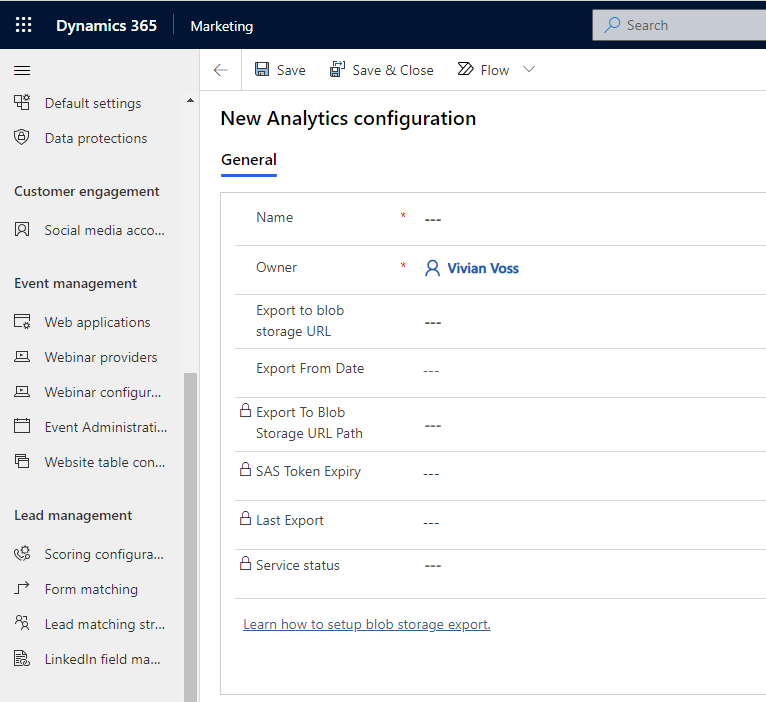Why?
Lets start off with a bang!
Insights is an amazing tool and something I will also write more about in the future. But it is a static What You See Is What You Get type of tool and there isn’t much you can do about it.Sometimes the out of the box solutions are just not 100% what you need and you would like to show relevant information that suit your needs or are part of a bigger report that just isn’t available in insights.
We use Power BI for all reports and also wanted to combine the data that we get from D365 Marketing within various marketing reports such as the Marketing KPI report. As Insights data is not accessible through Dataverse, we had to look a bit deeper into the matter.
Turns out that MS has, in their April release 2020, released a function to export Marketing Insights data to blob storage.
How?
- You need a blob storage container. More info about setting it up here: Prepare for analytic reporting with Power BI (Dynamics 365 Marketing) | Microsoft Docs
- Go to Marketing settings and find Marketing Analytics configuration (it is under Data management header)

- Create a new marketing analytics record from the +New button in the top ribbon
- Fill in the “Name” and also the “Export to blob storage URL” field with a link that you copied when creating the blob storage container. These 2 fields are mandatory and that have to be filled in in order for the export to work.

- You can also fill in the “Export from” field if you wish to export data from a specific point. If this field is left empty, then the system will export all data available in the Marketing application.
- Click save and you are done. After a bit you will see data coming into your blob storage.
More info
You are only allowed to create one configuration connection. Once you have created that connection, the +New button will disappear and you need to delete the existing connection to be able to create a new one.
From personal experience, double check that the numbers shown in the Marketing Insights in the Dynamics application are matching with the data you export. It doesn’t always match, but more about that in my next post 😉
If you wish to read more about this now, then MS has also created a good article with links here: Prepare for analytic reporting with Power BI (Dynamics 365 Marketing) | Microsoft Docs
